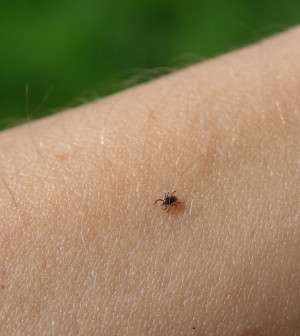- Skip Storing This Everyday Product in the Fridge Door
- Green Tea + B3 Pairing May Boost Brain Health
- Navigating Your Midlife Crisis: Embracing New Possibilities
- City Raccoons Showing Signs of Domestication
- Mapping the Exposome: Science Broadens Focus to Environmental Disease Triggers
- One Week Less on Social Media Linked to Better Mental Health
- Your Brain Changes in Stages as You Age, Study Finds
- Some Suicide Victims Show No Typical Warning Signs, Study Finds
- ByHeart Formula Faces Lawsuits After Babies Sickened With Botulism
- Switch to Vegan Diet Could Cut Your Greenhouse Gas Emissions in Half
Teens Who Indoor Tan Often Take Other Health Risks: Survey


American teens who indulge in indoor tanning — long linked to skin cancer risk — are also more likely to adopt other bad habits, a new federal survey of high school students finds.
“We saw that indoor tanning is associated with a number of other risky behaviors, such as illegal drug use, binge drinking and smoking,” said study lead author Gery Guy Jr.
“We also found that teens who tan indoors are likely to be very concerned about their appearance,” Guy added. “That sometimes leads to positive behaviors, like engaging in sports and eating healthy foods. But it also leads to unhealthy behaviors, such as steroid use or extreme weight control.”
Guy is a health economist in the division of cancer prevention and control with the National Center for Chronic Disease Prevention and Health Promotion, part of the U.S. Centers for Disease Control and Prevention. The study findings appear online Feb. 26 in JAMA Dermatology.
The study authors noted that between 1994 and 2006, the overall incidence of non-melanoma skin cancer in the United States doubled. Among American teens, melanoma has become one of the most frequently diagnosed cancers.
Previous research suggests that melanoma risk rises by nearly 60 percent among those who use indoor tanning facilities before the age of 35. The World Health Organization has classified indoor tanning booths as cancer-causing devices. And the CDC recommends that people of all ages refrain from the practice to prevent cancer and premature aging.
To gain insight into current tanning habits among teens, the CDC analyzed data drawn from the Youth Risk Behavior Surveys, which every year are administered to a national sample representing roughly 15.5 million American high school students.
The new study focused on the responses of nearly 26,000 students, starting as young as 14, who had responded to questions about indoor tanning in 2009 and 2011.
Despite strong public health warnings regarding the dangers of indoor tanning, the practice remains popular, the research revealed.
Overall, a little more than 13 percent of the high school students said they had tanned indoors in 2011. Of these, more than half said they did so 10 or more times over the previous year.
But when broken down by gender, the situation looked different. Indoor tanning among all girls seemed to be on a downward trend, dipping from about 26 percent in 2009 to about 21 percent in 2011. However, nearly a third of females aged 18 and up said they visited tanning beds in 2011, as did more than 29 percent of white girls.
For males, indoor tanning was most popular among those 18 and up, and also among white boys, the results showed.
Regional differences were also noted. For example, about 27 percent of those surveyed in the South said they tanned indoors, compared with about 17 percent in the West.
Those who tanned indoors were more likely to engage in some healthy practices that might be classified as appearance related, such as playing sports and eating more fruits and vegetables.
On the other hand, teens who tanned indoors were also more likely to engage in many problematic behaviors.
Among indoor tanners, boys were more likely to take steroids without a prescription, smoke or attempt suicide. Girls were more likely to take illegal drugs, or have multiple sexual partners. And both boys and girls were more likely to maintain unhealthy weight-control habits or binge drink, the study found.
“Of course the emergence of risky behavior during adolescence is not a surprise,” Guy said. “But as this study shows that many risky behaviors are associated with each other, it highlights the importance of taking comprehensive approaches to indoor tanning prevention.”
That means “trying to incorporate our specific concerns about indoor tanning into more general messaging about many of these other risky behaviors as well,” Guy explained.
Dr. Darrell Rigel, a clinical professor of dermatology at New York University Medical Center in New York City, said that approach has promise.
“But it’s a challenge,” Rigel said. “Clearly there is no such thing as a safe tan. And the more you do it at a younger age the worse it is for your health over time. It’s very analogous to cigarette smoking. But most teens feel they are immortal, and that nothing bad is going to happen to them. Unfortunately, it will.”
The new study “just reinforces the fact that despite everything we’ve tried — and we’ve tried all sorts of different messages over the years — we still haven’t hit on the right approach,” Rigel said. “But I totally agree that putting anti-tanning messages into a broader context makes sense.”
More information
For more about the risks of indoor tanning, visit the U.S. Centers for Disease Control and Prevention.
Source: HealthDay
Copyright © 2025 HealthDay. All rights reserved.










